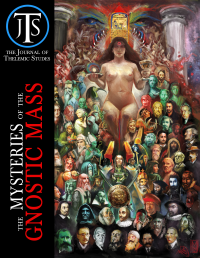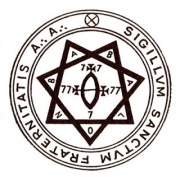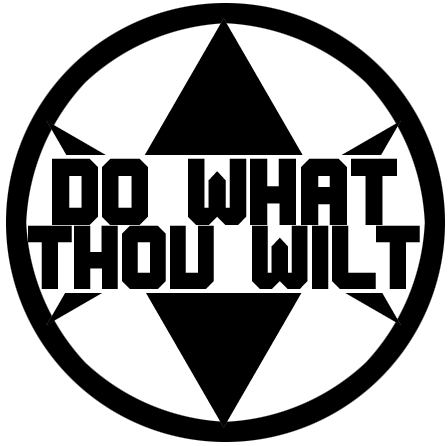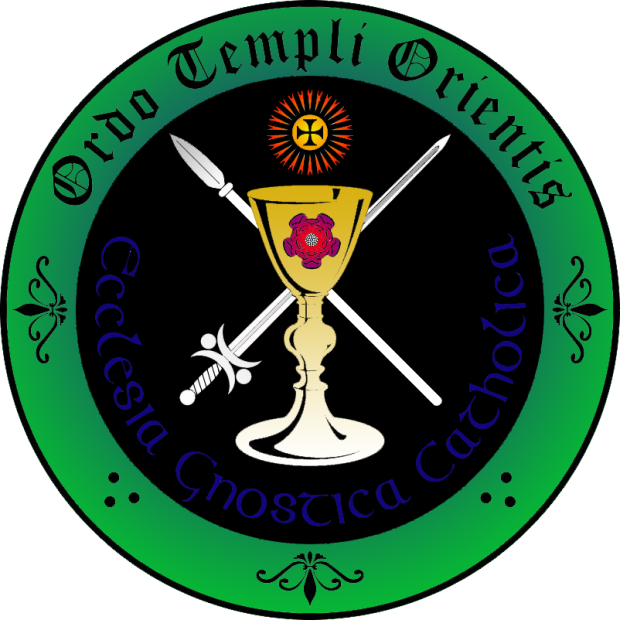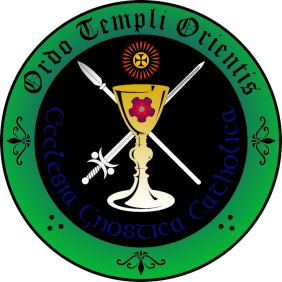Introduction
It is written in Liber AL vel Legis II:36, “There are rituals of the elements and feasts of the times.” Crowley comments, “The entry of the Sun into the cardinal signs of the elements at the Equinoxes and Solstices are suitable for festivals. The difference between ‘rituals’ and ‘feasts’ is this: by the one a particular form of energy is generated, while there is a general discharge of one’s superfluous force in the other. Yet a feast implies periodical nourishment.” This cycle of dramatic rituals are therefore invocations. They are intended to generate energy at the entrance of the Sun into the cardinal signs of elements at the four quarters of the year, i.e. the Equinoxes and Solstices.
The entire cycle of rituals simultaneously show:
- The macrocosmic cycle of the Sun going through the seasons
- The microcosmic cycle of Man going through the generations/Incarnation (birth/youth-adulthood-old age-death).
- The process of Attainment from 0=0 to 8=3 and back again.
The energies of each ritual correspond to each of these planes at once:

Each ritual invokes a particular energy. Each ritual has a particular Word of Power associated therewith and it is intoned in between the scenes. The Word also appears once in each ritual within a particular Scene.
Each of the four rituals has 3 scenes for a total of 12 scenes for the entire cycle, one for each of the signs of the Zodiac. The middle scene of each ritual is the sign of the Equinox or Solstice – for example, the middle scene in Autumn is Libra. The first scene is therefore Virgo, the sign before Libra, and the last scene is Scorpio, the sign after Libra. In general, the first scene represents events leading up to the Equinox or Solstice, the middle scene represents the actual turning-point, and the last scene represents events leading to the next Equinox or Solstice.
The Basic Characters
- (☉/♂) Priest/King – the conscious Self. The Child who grows to become King who attains and becomes a Priest and then dies and is reborn as the Child.
- (☽/♀) Priestess/Queen – the Non-Self (the unconscious self, the “higher self,” etc.). The Mother of the Child, the Queen/Beloved of the King, the High Priestess of the Priest.
- (+ and -) 2 Children – the duality of the World. Various roles throughout the entire cycle.
- (⊕) The People (participants) – the inhabitants of the World; they identify (at least their conscious selves) with the Priest.
 THE VERNAL EQUINOX CEREMONY
THE VERNAL EQUINOX CEREMONY
Also known as “The Bornless Reborn”
The Word of this ceremony is ‘VIAOV.’ It is repeatedly intoned in between scenes by the People/Congregants. The Incense of this ceremony is Frankincense1 and/or Rose.2 The Talisman of this ceremony are fresh, Spring flowers.3
SCENE I: Pisces.
End of Winter, the Final Lamentations of the Mother
[MUSIC: The last ~2 minutes of Alexander Glazunov’s “Winter” from “The Seasons,” which continues the song that ended the Winter ceremony]
The Queen is the Mother4, lamenting the death of the King at the tomb in the West5. + and – stand in the East in front of the dais as forms of Anubis6, looking to the West at the Queen. The Obelisks are still broken.
[MUSIC: Sounds of wind howling/storm fade in and overpower the music]
MOTHER: Sterility is my name, and desolation.
+: Intolerable is thine ache
–: And incurable thy wound.
MOTHER: I said, Let the darkness cover me; and behold, I am compassed about with the blackness that hath no name.7
+: The sun has become black!
–: The moon has become as blood!8
MOTHER: All that was ordered and stable is shaken!9 The winter storm has plunged our kingdom into darkness.
The Queen pauses and listens to the howling winds.
MOTHER: The mystery, the evil darkness of these incoherent cries, sets my teeth on edge with horror. And yet I cannot give up the hope which thrilled me at the Voice.10 But so keen, so desolate, so deadly is the pain of my spirit that blank darkness overwhelms me altogether.11
+: Yet there was a star in sight…
–: A star of hope arose…
MOTHER: Yet fell back into the darkness of the waters!12 A Star in the West? What folly!13 The King has left no heir and I fear we may wallow in this darkness forever. This discipline is sorrowful…
+: And ploughing is laborious…
–: And age is weariness…14
MOTHER: I sink through waves of blackness… down!
The Queen falls down.
+: Down!
+ falls down.
–: Down!15
– falls down.
MOTHER: In this Kingdom of the Grave, there is no light or knowledge.
+: Nor beauty.
–: Nor stability.
MOTHER: The worm is crowned!
The Queen places her crown on the ground.
MOTHER: All that we have been hath been eaten up! All that we shall be is nothing!16
+: The darkness of the earth is ruddy.
–: The darkness of the air is grey.
MOTHER: The darkness of the soul is utter blackness.17
The Mother laments and, with each wave of sobs and cries of pain18, the thunder of the storm gets louder and longer, an earthquake19 rumbles stronger and stronger.
+: The Queen is sore distressed!20
–: Who is now set to save us?21
+: Is not the egg of spirit a black egg?
–: Is not the snake that devoureth the spirit of man the lust of light?22
+ stands up while saying:
+: Let us beseech the Babe that abides in the egg!
– stands up while saying:
–: Let us invoke the Son of Morning hidden in the Lotus!23
+ and – walk to the West and gather on opposite sides of the Mother. + turns around, and + and – circle the Queen widdershins (counter-clockwise) while vibrating VIAOV three times. During the first vibration, + and – are in the Sign of Isis Mourning; during the second vibration, they are in the Sign of Apophis; during the third vibration, they are in the Sign of Osiris Risen; there are a total of 9 widdershins circumambulations.24
+ & –: VIAOV. VIAOV. VIAOV.
The King is hidden inside the Veil in the East. The Music gets quieter for a moment.
KING: In the thick darkness the seed awaiteth spring.25
END SCENE
[MUSIC: The thunderstorm continues and gets louder.]
Congregants repeatedly intone ‘VIAOV’ in between scenes.
SCENE II: Aries.
The Vernal Re-Birth of the Father in the Child
[MUSIC: The storm continues to rumble with thunder.]
The King is still behind the Veil. The Obelisks are stood upright and in front of the Veil.
The Queen gives + a Dagger and – a Disk.26
KING: Let the Illusion of the World pass over thee, unheeded, as thou goest from the Midnight to the Morning!27
+: It is He! The Bornless Spirit!28
–: It is He that lighteneth and thundereth!29
The Mother rises.
[The sound of the storm begins to fade away]
MOTHER: It is He! The Truth!30 He is risen!31
+: He is exalted!
–: He is great!
+: Glory to God!
–: Thanksgiving to God!32
MOTHER: There is no god but man.33
[MUSIC: Sound of lightning and “OM” intoned]
The Mother gives the Sign of Isis Rejoicing,34 and there is a flash of lightning.35 +, –, and the Mother all kneel in awe as the Child emerges. The King is seen as the Child36 in the East37 in the attitude of Resurrection,38 dressed in Green39 or Rose-pink40 or plant-life with a golden sash around his chest,41 and he carries fresh flowers in both hands. + holds up the Dagger42 and – holds up the Disk43; they then both kneel and adore the Child when he begins his speech.44
KING: “I am that I am, the flame / Hidden in the sacred ark. / I am the unspoken name / I the unbegotten spark. / I am He that ever goeth, / Being in myself the Way; / Known, that yet no mortal knoweth, / Shewn, that yet no mortal sheweth, / I, the child of night and day. / I am never-dying youth. / I am Love, and I am Truth. / I am the creating Word, / I the author of the aeon; / None but I have ever heard / Echo in the empyrean / Plectron of the primal paean! / I am the eternal one / Winged and white, the flowering rod, / I the fountain of the sun, Very God of very God! / I am he that lifteth up / Life, and flingeth it afar; / I have filled the crystal cup; / I have sealed the silver star. / I the wingless God that flieth / Through my firmamental fane, / I am he that daily dieth, / And is daily born again.”45 VIAOV!46
The King looks to + and – who are kneeling in supplicated adoration.
KING: Fear not; I am the first and the last; I am he that liveth and was dead; and, behold, I am alive for evermore, for I have the keys of hell and of death.47 Kneel not in supplication, for I am your fellowservant. You are my brother [he raises + to his feet, takes the Dagger in his right hand, and gives + half of the flowers] and my sister [he raises – to her feet, takes the Disk in his left hand, and gives – the other half of the flowers]. Worship Thyself!”48
The King stands in the Sign of Osiris Risen, holding the Dagger and Disk against his shoulders. + and – go around and give each of the Congregants a flower with the words “Worship Thyself!”
[MUSIC: Part of “Appalachian Spring” by Copland]
When complete, + and – return, place any extra flowers on the High Altar in the East, and take back the Dagger and Disk, respectively. The King then approaches the West to comfort his awe-struck Mother. + and – go with him, flanking him.
KING: Mother, you mourn sincerely, but your sorrow has no cause. The change which ye lament is the life of my rejoicing, and the sorrow that blackeneth your heart is the myriad deaths by which I am renewed.49 Grieve neither for the living nor for the dead. There has never been a time when you and I and all the stars gathered here have not existed, nor will there be a time when we will cease to exist.50 Wipe the tears from your eyes.
+: There is no death!
–: There is no sorrow!
+: There is no crying!
–: Nor is there pain.51
KING: Remember all ye that existence is pure joy; that all the sorrows are but as shadows; they pass & are done; but there is that which remains.52 I am the Eternal Sun, the motionless axle of the cycle of night and day, constant and triumphant throughout the changing seasons. Realize you are That which pervades the universe and is indestructible; no power can affect this unchanging, imperishable reality. Even in the face of death, you should not grieve. Death is inevitable for the living; birth is inevitable for the dead. Since these are unavoidable, you should not sorrow… There is none that shall be cast down or lifted up: all is ever as it was53 … there is no sin, and there is no salvation54… Death means the attainment of heaven, and life means the enjoyment of the earth. Therefore, rise up, Mother, and resolve to rejoice!55
MOTHER: Behold! where are now the darkness and the terror and the lamentation? For we are born into the new Aeon; we shall not suffer death… In the nights we will dance together, and in the morning we will go forth to war; for, as my King liveth that was dead, so do you live now and shall never die!56
END SCENE.
[MUSIC: Alexander Glazunov’s “Spring” from “The Seasons,” fade in starting from ~1:00.]
Congregants repeatedly intone ‘VIAOV’ in between scenes.
SCENE III: Taurus.
The growth of the Body in Boyhood, the equilibration of the Elements
The future King is a youth, growing into adolescence. He is counseled by the Mother to grow in preparation for the Child to take the throne as King: he is taught to balance the Elements57 in the form of attainment of the 4 Powers of the Sphinx:58 To Know, To Will, To Dare, To Keep Silence. The Mother leads the Child around to each Quarter.59
MOTHER: Ah, my son! You are like a hawk with mighty-sweeping wings of mother-of-emerald. The very earth gladdens into green at your coming. Children of Earth! Rejoice! Rejoice exceedingly, for our salvation is at hand. The end of sorrow is come!60
KING: I am still but a child, innocent and impotent.61 How should I ever become deserving to take my Father’s throne?
MOTHER: You must first become worthy to seize the Sacred Lance of his power.62 The temple must be builded before the God can indwell it.63 Strengthen thyself! Set thy feet firmly upon the earth.64 Tend the garden of your soul!65
KING: Heavy is the labour, but great indeed is the reward.
MOTHER: You shall not see the reward,66 but you must tend the garden. Who can tell upon what day a flower shall bloom?67 In the impure Soul no Vision will arise, therefore cleanse the Soul68: balance the Elements within oneself: You must achieve the Four Powers of the Sphinx, though even adepts hardly attain to one of them!69
The Mother leads the Child-King to the West where + stands as representing the threat of unbalanced introversion. – stands in the East.
+: The wiles of the world are a plague upon the spirit! Build yourself up as a fortress to withstand the poisonous attacks of sense.70
The King looks to the Mother for guidance.
MOTHER: Be strong, o man! lust, enjoy all things of sense and rapture: fear not that any God shall deny thee for this. Exceed! Exceed! Strive ever to more! Love is the law, love under will.71
The Mother gives the Sign of the Enterer,72 and the King turns back to + to give the Sign of the Enterer himself.
MOTHER: My Child, the Power of Daring is in your heart, coiled and ready to leap!
[MUSIC: Fade in “Mars” by Holst during circumambulations and fade out before the next line is spoken]
The Mother leads the Child-King 1¼ deosil/clockwise circumambulations while + moves widdershins-counter-clockwise ¾ circle (– mirrors movements of + on the opposite side of the circle; + ends in the North and – in the South); King and Queen come to the North where + stands as representing external Tyranny. The King faces + with the Mother behind him and to the side, guiding him.
+: Thou shalt honor thy father and thy mother! Thou shalt not commit adultery!73
The King looks to the Mother for guidance.
MOTHER: Thou hast no right but to do thy will. Do that, and no other shall say nay.74
The Mother gives the Sign of Silence,75 and the King turns back to + to give the Sign of Silence himself.
MOTHER: My Child, the Power of Knowledge grows within you!
[MUSIC: Fade in “Mars” by Holst during circumambulations and fade out before the next line is spoken]
The Mother leads the Child-King 1½ deosil/clockwise circumambulations; + and – do not move. The King and Queen come to the South where – stands as representing unbalanced extroversion. The King faces – with the Mother behind him and to the side, guiding him.
–: Be not lead into temptation, beware of your prideful sins!76 Love is charity and sacrifice to others.
The King looks to the Mother for guidance.
MOTHER: Ye shall be as ye are, & not other. Therefore the kings of the earth shall be Kings for ever: the slaves shall serve.77
The Mother gives the Sign of Silence,78 and the King turns back to – to give the Sign of Silence himself.
MOTHER: My Child, do not give overly of yourself to others in thought, word, or deed; Knowledge, Will, and Courage are for naught if you do not Keep Silence!
[MUSIC: Fade in “Mars” by Holst during circumambulations and fade out before the next line is spoken]
 The Mother leads the Child-King ¾ deosil/clockwise circumambulations while – moves widdershins-counter-clockwise ¼ circle (+ mirrors movements of – on the opposite side of the circle; – ends in the East and + in the West); King and Queen come to the East where – stands as representing internal Tyranny. The King faces – with the Mother behind him and to the side, guiding him.
The Mother leads the Child-King ¾ deosil/clockwise circumambulations while – moves widdershins-counter-clockwise ¼ circle (+ mirrors movements of – on the opposite side of the circle; – ends in the East and + in the West); King and Queen come to the East where – stands as representing internal Tyranny. The King faces – with the Mother behind him and to the side, guiding him.
–: Who art thou that dost float and fly and dive and soar in the inane? Behold, these many æons have passed; whence camest thou? Whither wilt thou go?79
The King looks to the Mother for guidance.
MOTHER: A curse upon Because and his kin! May Because be accursed for ever! If Will stops and cries Why, invoking Because, then Will stops & does nought. If Power asks why, then is Power weakness.80
The Mother gives the Sign of the Enterer,81 and the King turns back to – to give the Sign of the Enterer himself.
MOTHER: My Child, you have begun to unfold the Power of Will. There is no law beyond Do what thou wilt.82
The Mother takes off the King’s green/rose-pink tabard.83 + takes the tabard from the Queen; + and Queen move to the East to join –, and + places the tabard in the East.
The Queen retrieves the Lance from the High Altar. + and – move to the center, The King in the West, the Mother in the East, + in the South, and – in the North so that all four individuals form a circle or diamond in the center, all facing inwards.
+: You have passed through each of the quarters.
–: You have become an adherent, a Man of Earth.84
+ holds the Lance upright in the center. +, –, and the Mother all intone a syllable of “IAO.” The Mother begins with “I,” and while she is still intoning, + begins to vibrate “A,” and – vibrates “O” so that all three are vibrated at once. Finally, the King vibrates “VIAOV” and they all end at the same time.
QUEEN: I!
+ holds the Lance with the Mother while intoning:
+: A!
– holds the Lance with the Mother and + while intoning:
–: O!
The King grabs the Lance and raises it while the Mother, +, and – all let go, all while the King intones:
KING: VIAOV!
+ and – turn to flank the Mother while facing toward the King.
KING: Am I not nearly purged of the iniquity of my forefathers?
MOTHER: Yet a little…85 This is only the first step upon the Path of the Great Work. Our Kingdom is still in danger: the Lower Kingdom threatens us where the Daughter of their King still rules. You must now leave me: win your own adulthood by winning a worthy Queen, and reclaim your rightful place as King.86 Go now, with ecstasy of worship in your heart.
+: With a clear mind.
–: And a passionate body.87
MOTHER: Go now, and may you grow to be a great King!
+: May you wax strong in spirit.
–: May you be filled with wisdom!88
[MUSIC: Fade in “Mars” from “The Planets, op.32” by Gustav Holst, starting from ~3:45]
KING: I shall find the Daughter of the King89 and she will become my bride! The voluptuous Virgin of Night will illumine my soul with arcane delight!90 Our Upper Kingdom will be united with the Lower once more: I shall set her upon the Throne of my Mother91 and the whole earth will rejoice.92
The King raises his Lance and marches to the West and into the Tomb.
END SCENE.
[OUTRO MUSIC: Play out “Mars” for about 2-3 minutes.]




 We believe that ownership over one’s own body is foundational: we are utterly opposed to any form of slavery or human ownership.
We believe that ownership over one’s own body is foundational: we are utterly opposed to any form of slavery or human ownership.





